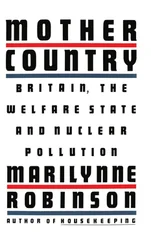Britain, physically less scarred by war, had laid the foundations of its welfare state earlier. But to argue that it crippled the economy seems, in Sir Alec Cairncross’s phrase, ‘badly out of focus’. Cairncross calculates that spending on education, health, housing, pensions and unemployment benefit reached about £1.5 billion in 1950 – half as much again in real terms as before the war. But defence expenditure never ran below £750 million after 1945, roughly twice as much in real terms as in 1938, and reached more than £1400 million again in 1952. Food subsidies, which are arguably a part of the welfare state but are also an economic regulator put in place to keep prices down, cost approaching £500 million in 1949 – more than any single social service. 3Almost £2.5 billion in cash compensation or commitments to interest-bearing stock went through the national accounts after 1945 to pay for nationalisation. 4To argue that any one of those caused Britain’s relative post-war decline would be as logical or illogical as to argue that the welfare state did. The causes are complex, not singular or bipolar. They involve such measurables as the loss of markets and capital base during the war, and Britain’s post-Imperial role after 1945 as the world’s third largest military power and international policeman. They equally involve such immeasurables as to how far the country felt it needed to strive, having just won the war, and why labour relations, and hence productivity, were so bad. Indeed, to argue that the welfare state should not have been established, or should not have been established yet, is to ignore political reality. A country which had covered large tracts of East Anglia in concrete to launch bomber fleets, and the south coast in Nissen huts to launch the largest invasion the world had ever seen, could hardly turn round to its citizenry and say it was unable to organise a national health service; that it couldn’t house its people; or that it would not invest in education. Furthermore, compared to pre-war levels, the big surge in welfare state spending started in the late 1950s, not in the immediate post-war period which Barnett rightly identifies as one of the critical periods when Britain failed to invest in its industrial base. But that begins to jump ahead in the story.
Before we start, a word about definitions is needed. There is no agreement about what constitutes ‘the welfare state’. Even the origin of the phrase is the subject of learned dispute. 5It was popularised in Britain in 1941 by an Archbishop of York and only adopted by Clem Attlee in time for the 1950 election. The Oxford English Dictionary used to be a little slow, but the phrase only reached the dictionary’s addenda in 1955 and with a definition we would now use in 1964. 6At times its boundaries have been drawn so tightly as to exclude most of the social security budget, limiting it to what the Americans call ‘welfare’: payments to the poor plus what we, in the national accounts, still call ‘welfare foods’. At others, as in Pauline Gregg’s 1967 book The Welfare State, it has been drawn to embrace virtually the whole of the economic and social history of Britain from 1945, including nationalisation, the neo-corporatism of NEDO, and beer and sandwiches at Number Ten – the aspects of Britain as a welfare state that Baroness Thatcher plainly did want to roll back in 1979, and over which she was largely successful.
The phrase also suffers the drawback of being static, as though ‘the welfare state’ were a perfect work, handed down in tablets of stone in 1945, never to be tampered with. Even to use the phrase is to set artificial frames. As an entity it does not exist – it is a collection of services and policies and ideas and taxes, including tax reliefs, whose boundaries expand and contract over time. It can never, at any one moment, be said to have been assembled or dismantled. Beveridge hated the phrase and refused to use it, disliking its ‘Santa Claus’ and ‘brave new world’ connotations. 7I would rather not have had to.
For this book it is defined in the strictly limited sense of representing the antonyms to the ‘five giants on the road of reconstruction’ which Beveridge identified, the policies and services created to combat Want, Disease, Ignorance, Squalor and Idleness. Even here, boundary problems proliferate. Is legal aid part of the welfare state or not? Is planning, given that the New Towns clearly were? Is training, given that much of it has always been employer-funded, and yet it is a subject closely linked to education and one in which governments inevitably get involved?
The imperfect solution to these quandaries has been to be deliberately eclectic and to write about what most interests me. This decision extends to the book’s coverage of the mainstream services of health, education, social security, housing, social services, and, in lesser detail, employment policy. Thus it is possible to read The Five Giants and scarcely know that nurses exist or that Commonwealth immigration, which greatly affected the welfare state and was greatly affected by it, took place. The development of family planning – a profoundly controversial subject at the time – rates only a sentence or two. Social work is covered, but sketchily, it being one of those subjects where if you scratch too far below the surface you fall into an extremely large hole. The book distorts by omission. Welfare foods and food subsidies which at times consumed large sums of taxpayers’ money are barely mentioned; nor is the tobacco concession of two shillings and fourpence a week that, up to 1957, went to those pensioners who were prepared to swear that they smoked, in order to compensate them for a hike in tobacco tax in the 1940s. School examinations are only touched on. By no means all changes to benefits or housing subsidies have been charted, and training receives the lightest of looks. The list could go on. The excuse is twofold. First, even in a book this size, not everything can go in. As one former permanent secretary put it: ‘You have to remember that every minister who went through here wanted to leave his or her mark on the system and very few of them failed entirely.’ 8He was speaking of social security; but his remark could apply to any of the government departments or subjects covered. And second, I had a tale to tell. There is a lot of detail here. But too much detail, too many by-ways and sub-plots, can spoil a story worth telling. The Five Giants, then, is not a book of accounting, or even of analysis, though there is a little of each within it. It is primarily a biography of a subject still very much alive. I hope it proves worth reading.
NICHOLAS TIMMINS
January 1995
PART I
THE PIPERS AT THE GATE OF DAWN
CHAPTER 1
‘Thank you, Sir William’
In every country it is unfortunate not to be rich; in England it is a horrible misfortune to be poor.
Alexis de Tocqueville, Voyages en Angleterre et en Irlande en 1835
‘They used to tell me I was building a dream …’
E. Y. Harburg, ‘Brother can you spare a dime’, American song of the Great Depression, opening line
At this stage of the war, the main ideas of reconstruction were in their first bloom, but largely, also in a state of suspended animation. Like the sleeping beauty, they awaited the prince’s kiss. In almost every field of reconstruction, Beveridge’s report of December 1942 was to be the decisive breath of life.
Paul Addison, The Road to 1945, p. 171
IN JUNE 1941, Sir William Beveridge was called in by Arthur Greenwood to be offered a job. Greenwood was the Labour Minister for Reconstruction in Britain’s wartime coalition government. Beveridge was an egotistical sixty-two-year-old civil servant who believed his destiny was to organise key parts of Britain’s war effort. He was asked instead to chair an interdepartmental committee on the co-ordination of social insurance. The task hardly sounded inspiring. With tears, not of joy but of bitter disappointment, in his eyes, he accepted. 1It was the strangest of starts to one of the greatest of adventures – the founding of Britain’s modern welfare state.
Читать дальше
![Nicholas Timmins The Five Giants [New Edition]: A Biography of the Welfare State обложка книги](/books/701739/nicholas-timmins-the-five-giants-new-edition-a-cover.webp)











